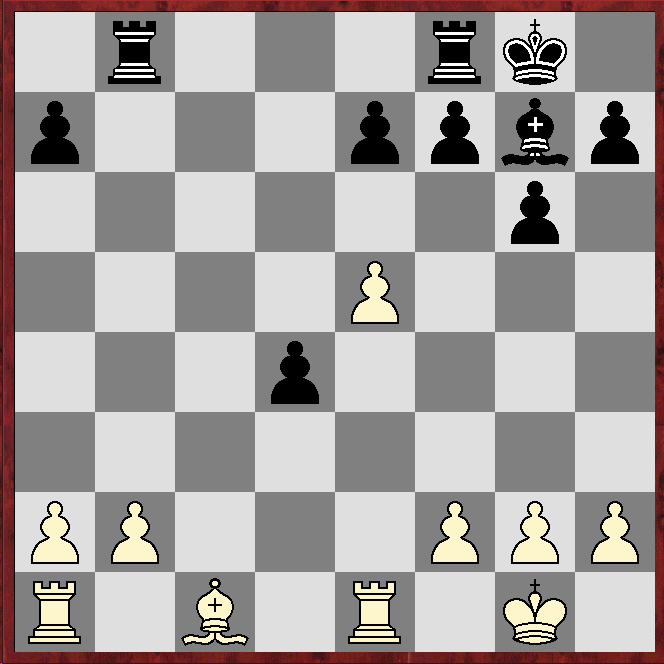Paul Stokes (1809) - Spanton (1884)
Queen's Pawn Game
1.d4 d5 2.Nf3 Nc6 3.g3 Bf5!?
This fairly popular alternative to the mainline 3...Bg4 has been recommended by Chigorin guru Alexander Morozevich.
4.Bg2 Nb4!?
The attack against c2 is easily defended, and then repulsed, but after ...
5.Na3 e6 6.c3 Nc6
... it is far from clear who has done better out of the sequence.
*****
*****
*****
*****
7.b3
The main continuation in ChessBase's 2024 Mega database is 7.Nc2 h6!? (7...Be7 and 7...Nf6 are also commonly seen) 8.0-0 Nf6 9.b3, after which Komodo14.1 marginally prefers White, while Stockfish16 marginally prefers Black.
7...Nf6 8.0-0 Bd6
The engines suggest 8...Ne4!?, which would seems to be a novelty.
9.c4 0-0 10.Bb2 Be4!? 11.Nb5 Re8!?
The engines prefer ensuring the bishop-pair is maintained with 11...Be7.
12.Nxd6
But here they like 12.Nc3!?, claiming a slight edge for White.
12...cxd6
*****
*****
*****
*****
White has the bishop-pair, but the position is far from being open, and Black's centre has been strengthened. The engines reckon the game is balanced.
13.e3 Qb6 14.Qe2 a5 15.Rfc1 a4 16.c5 Qc7!?
Moving a queen onto the same file as an enemy rook, especially when the file can be immediately emptied of pawns, is often not a good idea, but here it seems fine.
17.Ba3 dxc5 18.Rxc5 Nd7 19.Rcc1 Qa5 20.bxa4 Nb6!? 21.Nd2!?
The engines agree with offering up the bishop-pair- after all, Black's light-square bishop is much more active than its white counterpart.
21...Bg6
Exchanging bishops, followed by capturing on a4 (either way), is also fine.
22.Nb3 Qxa4 23.Bb2 Nc4 24.Bc3 b5
Probably better is 24...b6!?, taking away c5 from the white knight. I rejected it because I did not like White's activity after 25.e4 dxe4 26.Bxe4 Bxe4 27.Qxe4, but the engines reckon both 24...Nd6 and 24...Ne7 give Black at least a slight edge.
25.Nc5 Qa3 26.h4 b4?!
Black's position almost certainly becomes too loose after this. The engines reckon both 26...h6 and 26...h5 give equality.
27.Be1 h6?
Black had to play 27...Qb2, but 28.Qxb2 Nxb2 leaves the black position uncoordinated.
*****
*****
*****
*****
28.Rxc4! dxc4 29.Bxc6
*****
*****
*****
*****
29...c3
This is best, according to the engines. I rejected 29...b3 because of 30.Bc3, and even stronger, according to the engines, is 30.e4.
30.Qc4??
This turns a win into a loss. The simple 30.Bxe8 Rxe8 31.e4 wins, as does, according to the engines, 30.e4.
30...Qb2 31.Nb3?!
Relatively best, according to the engines, is 31.Bxc3!? bxc3. followed by 32.Qf1 or 32.Rf1.
31...Rec8 32.Qxb4 Rxc6 33.Rc1 Bc2
*****
*****
*****
*****
34.Bxc3!? Rxc3 35.Qb7 Rxa2 36.Qb8+ Kh7 37.Qb7 Rxb3 0-1

















































